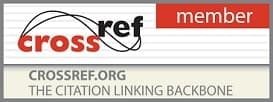2018, Vol. 2 Issue 3, Part A
Indirect reduction vs anatomical reduction in complex inter trochantric fractures managed with proximal femur locking compression plate
Author(s): Dr. Raghavendra MS and Dr. Bharath Shekharappa Gadagoli
Abstract: Background: proximal femur fracture is one of the common fracture in elderly. The purpose of this study was to compare the results Indirect reduction vs anatomical reduction in complex inter trochantric fractures managed with proximal femur locking plate. Materials and methods: The proposed study is a hospital based prospective study. It was done between 2013 and 2016. 40 patients of inter trochantric fracture were included in the study. 20 cases randomly were treated by indirect reduction and rest 20 by anatomic reduction. The union rate, hip function and complication were compared between the 2 groups. Results: In the Study, 19 (95%) of the fractures united in 16 wk in indirect reduction group where as 80% of direct reduction group had union in 16 wk. There were no cases of intraoperative fracture comminution, or infection in indirect reduction group but anatomical reduction group had 3 cases of infection and 2 intraoperative fracture comminution. 7 patients in indirect reduction group had mal union and 2 had screw breakage but anatomical reduction group had no such complications. Functional results were graded according to the Harris hip score. Overall functional results were excellent in 70% in indirect reduction group compared to 93% in anatomical reduction group of patients. n=number of cases
Pages: 24-27 | 1373 Views 95 Downloads
How to cite this article:
Dr. Raghavendra MS, Dr. Bharath Shekharappa Gadagoli. Indirect reduction vs anatomical reduction in complex inter trochantric fractures managed with proximal femur locking compression plate. Nat J Clin Orthop 2018;2(3):24-27 DOI: https://doi.org/10.33545/orthor.2018.v2.i3a.53






